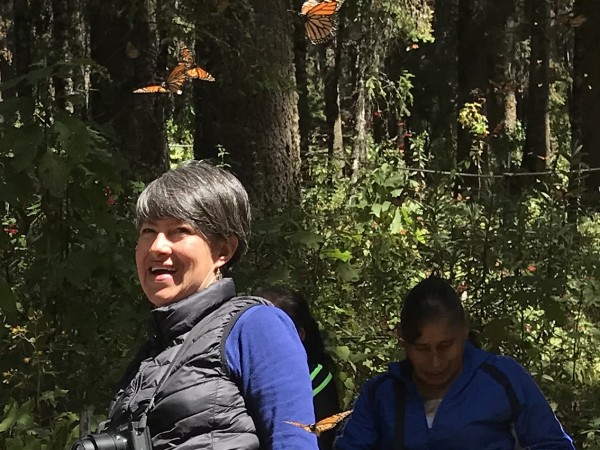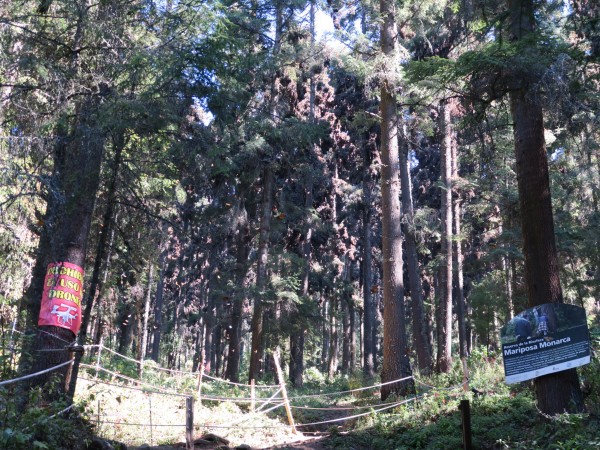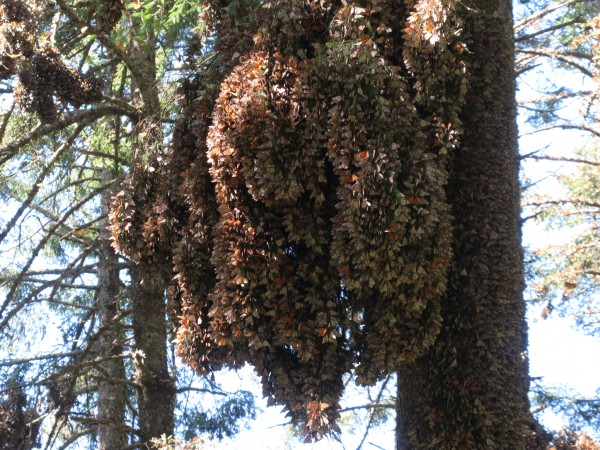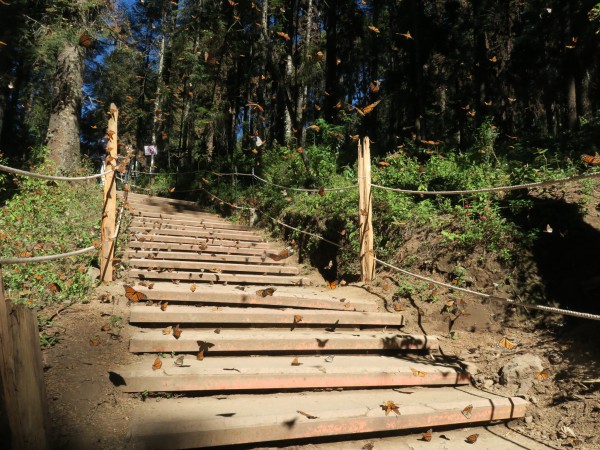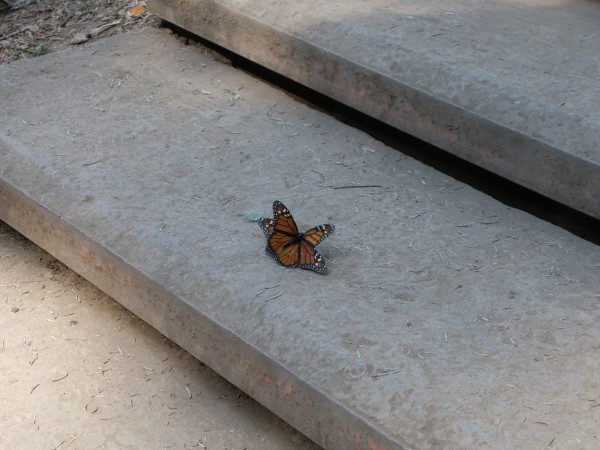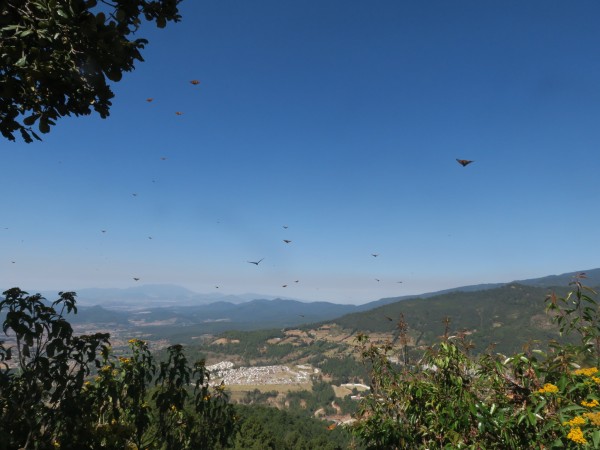Letter from Estela
A Spectacular Season Not Seen in Years!
February 12, 2019
Dear friends,
Welcome all to the peak of an extraordinary Monarch season at the Sanctuaries Sierra Chincua and El Rosario in Angangueo, Michoacán, Mexico.
This is indeed an exceptional year! The official counts just released days ago, have confirmed what we suspected: the largest population in years. This matches the extraordinary numbers everyone observed last fall while the monarchs were on their journey south.
The Colony in El Rosario
Monarchs arrived, as every single season, ones after the other ones until they first formed a normal, well concentrated colony (in Oyamel forest in “Los Orcones” and east to “Llano de los Conejos” location).
A couple of weeks after this first normal arrival, they increased their population exponentially and suddenly moved down, unexplainably and impressively, to both of the very sides along the first segment of the cement stairway. The butterflies are down at the entrance of the Sanctuary itself. This is a really low altitude, a more open and warmer location than their historical, traditional roosting sites up higher (either in “Los Orcones” or “Las Balsitas” or even the flat and open, sunny area of “Llano de los Conejos” where we had seen a proportional important portion of the population at least a couple of times in the past few years).
The way Monarchs are now clustering and overwintering totally down low, near the entrance of El Rosario, and away from their typical roosting areas inside their Oyamel forests here might hardly have any precedent in the past decades.
It’s impossible to describe for you, the impression one shall experience. The colony is so large it would be hard, from whatever point one is standing, to see the other extreme end of it. Not the best camera, not the best video could tell the phenomenal, gorgeous, almost out-of-normal nearly ALIEN phenomenon. No words describe the experience.
The extremely bright-sunny days and the warm temperatures hitting our region kept a considerable portion of the massive population extremely restless, flying every sunny morning all over around and even extending away from the roosting site itself, and down to the canyon and valley of Angangueo, clearly pointing their energetic flying in a northward direction, as when we see them starting their massive departure from mid to end March! Also, even though it's early February they have already started to mate really actively and rather abundantly.
So we have two unusual observations:
An important portion of the monarchs are extremely active and restless all over, either flying or landing on the stairway, as well as on the bodies and hats of visitors (¡!), having already started to mate. This was especially true before and until the beginning to mid last week, before our climate conditions somehow normalized.
The whole massive colony is not even seeming to try to make the least intent to move on to roost overnight up to their traditional Oyamel overwintering sites in the forest.
The Colony in Sierra Chincua
One can say that in spite of the above rather unusual climate conditions described, the colony at Sierra Chincua, to start with, is wonderfully well defined, with a very normal and stable behavior during the day-time-span. The beautiful and tightly clustered colony covers 100-120 Oyamel trees almost from bottom to top.
A couple mating every here and there has been already at sight in this Sanctuary, which results rather early for this time of the season.
Hundreds and hundreds and hundreds of visitors can be overheard telling how incredible such a natural phenomenon is here to be contemplated by all.
The weather for Monarchs in their overwintering areas, in general, had been typically cold and freezy at night (-3/-5 Celsius) but with a gorgeous sunshine during the day, reaching warm temperatures with up to 16 Celsius, from early November to after mid-January.
All of a sudden, for around three weeks now, temperatures suddenly changed to mild, then to warm and last to very warm, leaving our typical crispy-frosty nights and mornings behind and feeling it as if we were having typical end-February to early-March temperatures, awakening a rather kind of concern in all locals as well as specialists.
Even though we had an exceptionally intense raining season, one can see how much our region, forests and ecosystem in general, are substantially missing humidity. It is only early February now and we can notice how dry the soil and how dusty the canopy along the roads to the Sanctuaries are. Once inside the forest, the season promises for a wonderful blossoming of our wild flowers as rich source of nectar for Monarchs and other pollinators.
Until next week,
Estela Romero
Journey North
Angangueo, Michoacán, México
February 12, 2019

